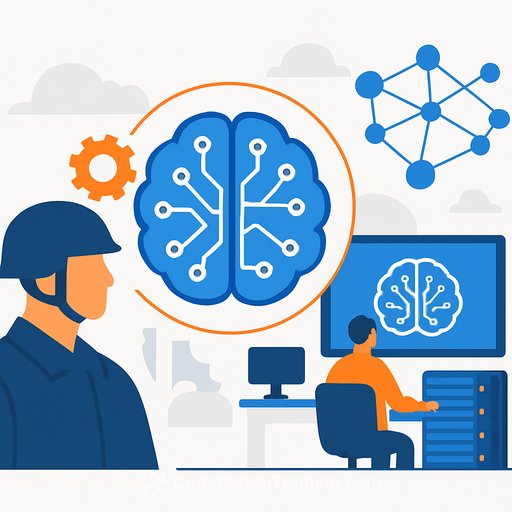INDOPACOM's AI Ambition Starts With Two Things: Faster Roads, Better Fuel
Artificial intelligence won't help much in the Indo-Pacific unless the theater is set for it. That was the clear message from Col. Jared Voneida, the Marine Corps official responsible for command, control, communications and computers within US Indo-Pacific Command.
"Easily the most disruptive technology that we have coming our way is artificial intelligence," he said at TechNet Indo-Pacific in Hawaii. The current workflow-PowerPoint, outbriefs, stale updates-can't keep up. "We need to leverage technology in order to speed up our decision cycle."
The sports car test: roads and fuel
Voneida's analogy is simple: AI is a sports car. To drive it fast, you need smooth, open roads (the transport layer) and the right fuel (clean, accessible data). Right now, too much data is siloed, untagged, and hard to reach.
"Where is our data? That data needs to be standardized, tagged and accessible," he said. "I want access to that data and I want a fast road to drive on."
Conflict will flood the theater-and the pipes
If a crisis hits, the joint force converges. Voneida noted that roughly 80% of the force now in the continental U.S. would surge into INDOPACOM's area, spiking bandwidth demands across the board.
At the same time, early AI adoption will move far more data across the network. "We need to have room to grow into that capability and make sure that we are not constrained by those pipes in times of conflict," he said.
From patchwork to purpose-built networks
Today's network reality: stitched together, inconsistent, and hard to command through. Within a five-mile radius of Pearl Harbor, there are eight major Department of Defense networks-each with separate funding, equipment, and teams.
"This patchwork quilt of networks that we have together where we're bending the pipe to make things work, as opposed to purposely engineering it to make it work is a challenge for us," Voneida said. He added that daily command-and-control decisions must account for service-specific cyber activities that don't directly serve INDOPACOM Commander Adm. Samuel Paparo, yet still affect how he fights.
The choice ahead is stark: do the hard work now, deliberately and properly resourced, or get "drug through the knot hole" during a conflict and rebuild under pressure.
What leaders and builders can do now
- Inventory, standardize, and tag mission data. Define ownership, lineage, and retention. Make it discoverable by default.
- Engineer the transport layer for surge. Prioritize high-capacity paths, resilient SATCOM, and smart routing with minimal chokepoints.
- Converge identity and access. Enforce zero-trust principles, policy-based access, and continuous authentication across services.
- Adopt a common data fabric. Use shared schemas, APIs, and catalogs to reduce one-off integrations and duplication.
- Instrument everything. Centralize telemetry, observability, and cyber defense signals to speed troubleshooting and response.
- Stand up repeatable AI pipelines. Build data prep, model deployment, and monitoring workflows that are portable across enclaves.
- Use cross-domain solutions by design. Plan for classification boundaries early to avoid brittle workarounds later.
- Push compute to the edge. Cache, process, and act forward to reduce latency and save bandwidth.
- Exercise at scale. Validate failover, degraded ops, and mission threads with realistic traffic, not lab demos.
- Align funding lines. Reduce redundant networks and gear; invest in shared infrastructure that commanders can actually fight on.
For context, see the official DoD Data Strategy and the USINDOPACOM mission overview.
Bottom line
AI will only deliver if the theater is ready. That means fast, resilient transport; clean, accessible data; and networks built for wartime command and control, not stitched together for peacetime convenience. Do it deliberately now-or be forced to rewire mid-crisis.
If your team needs to build practical AI skills for mission workflows, browse our AI courses by job.
Your membership also unlocks:










